Who
Erik Barnes, General Manager of Ragged Mountain, New Hampshire
Recorded on
April 26, 2022
About Ragged Mountain
Click here for a mountain stats overview
Owned by: Pacific Group Resorts
Summit elevation: 2,286 feet at the top of Pinnacle Peak
Vertical drop: 1,240 feet
Skiable Acres: 250
Average annual snowfall: 100 inches
Snowmaking coverage: 85%
Trail count: 57 (40% expert/advanced, 30% intermediate, 30% beginner)
Terrain parks: 3
Lift count: 5 (1 high-speed six-pack, 1 high-speed quad, 1 triple, 2 surface lifts - view Lift Blog’s inventory of Ragged’s lift fleet)
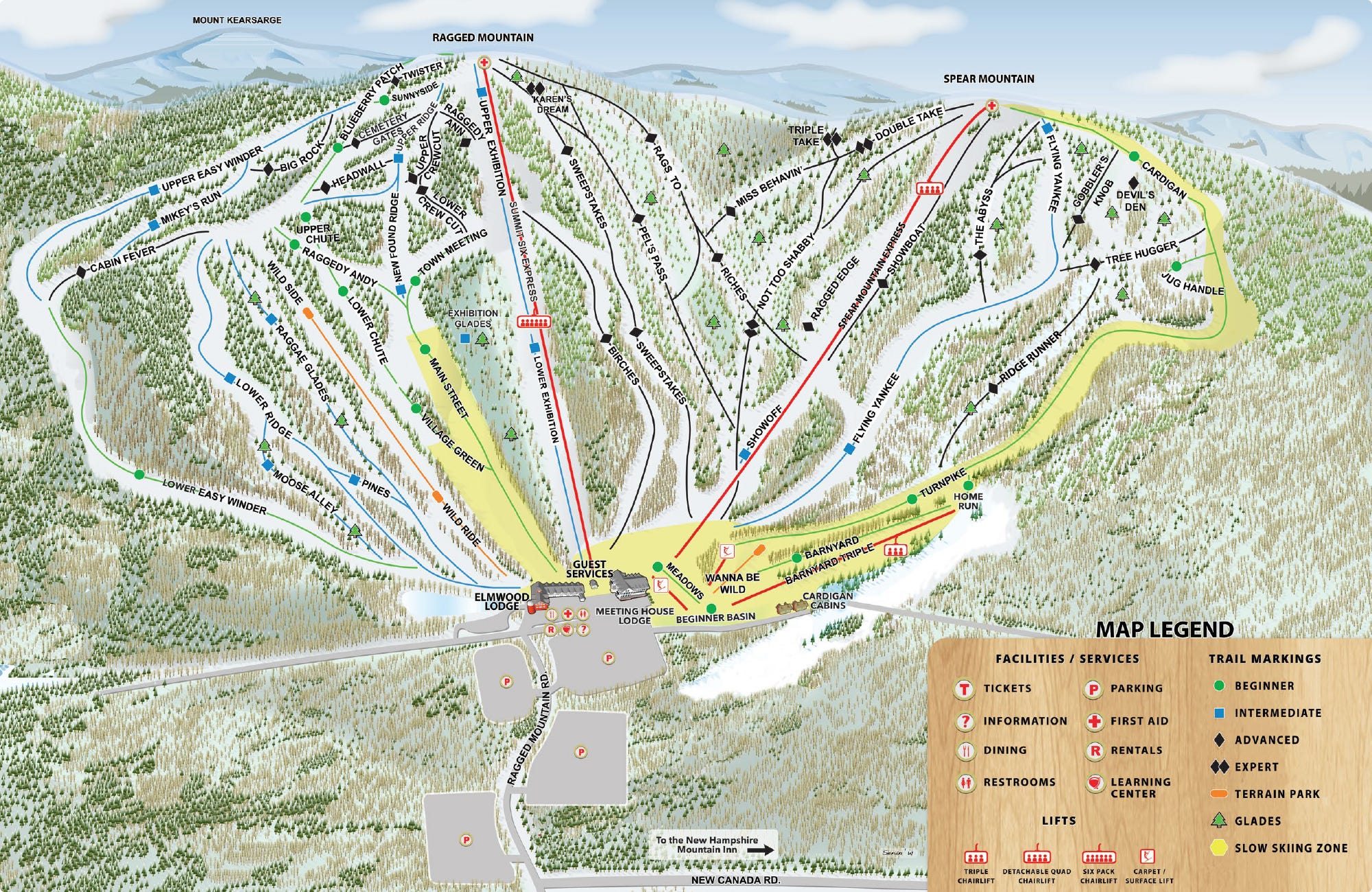
Why I interviewed him
I usually start with the mountain, but this time I’ll start with the man. Barnes spent 33 years at Mount Snow before landing at Ragged last October. That makes him one of the most seasoned ski area heads in a region where experience matters a hell of a lot. As Vail struggled to fully open and manage its New Hampshire properties last year, little, little-known Ragged seemed to do just fine. Outside of a four-day lift failure in early January, the ski area was staffed up and moving all season, in spite of warm December temps and a stubborn rain-snow line that sopped Ragged while its neighbors just to the north tallied a foot-plus in a series of storms. The ski area’s stability in the maw of all this instability demonstrates the importance of appointing experienced leaders such as Barnes to captain this temperamental region’s ships.
And this is a pretty nice little ship. Not a super-yacht or anything, but a solid pleasure cruiser. Ragged has all of the things: glades, detachables, that indie vibe, reasonable prices, and an experienced snowmaking and management team that can keep the boat sailing through the Northeast’s it’s-raining-lava-and-elephant-poop winters.
It’s pretty easy for a ski area to get lost in New Hampshire. It’s a great ski state with a lot of great ski areas: Waterville Valley, Loon, Cannon, Bretton Woods, Attitash, Wildcat, Black Mountain, Cranmore, Mount Sunapee, Gunstock. King Pine and Pats Peak are two of the best-run small ski areas in New England. So Ragged has some standing-out to do. It’s doing its best, but it’s one of the state’s least-appreciated spots, and I figured it was time to do some appreciating.
What we talked about
Ragged’s 2021-22 weather short straw; back when everyone used to learn on a ropetow and how that went; how you get from ski instructor to general manager of Mount Snow; ski school camaraderie and culture; the distinct culture of Mount Snow and why the ski area has been such an incubator of industry talent; how Mount Snow evolved as it was passed along from SKI to American Skiing Company to Peak Resorts to Vail Resorts; 251 fanguns will change your day; building Mount Snow’s Attack of The Planets snowmaking system and what makes it so powerful; what it takes to open a mountain in October in southern Vermont; Barnes’ reaction when Peak Resorts sold their entire portfolio to Vail; “what do you think?” versus “this is what we’re doing”; the East is a different game, Kids; what Vail needs to do to bring its Northeast ski areas up to standards; the particular challenges of running oft-bankrupted and frequently shuffled Ragged Mountain; Ragged’s unique snowmaking and snow-management systems; why Ragged didn’t suffer the same staffing challenges as other New England resorts this past season; how the ski area will respond to Vail’s new $20-an-hour minimum wage; a primer on Ragged owner Pacific Resorts Group and its five ski areas; the insane expenses of lift maintenance; an update on the Pinnacle Peak and beginner area expansions; how much land Ragged owns and what the eventual expansion options look like; Ragged’s big-bomber high-speed lift fleet; the importance of redundancy; whether we could ever see a surface lift serving the Wildside terrain park; Ragged’s extensive, wildly fun, and ever-growing glade network; whether we could ever see night skiing at Ragged; long-term snowmaking upgrades; the ski area’s Mission: Affordable season pass; whether Ragged could ever add reciprocal season pass partner deals, as its sister resort, Powderhorn in Colorado, has done; and whether Ragged has considered joining the Indy Pass.
Why I thought that now was a good time for this interview
Because it’s been nagging at me for years: this “FUTURE EXPANSION” promised on two sides of the ski area on Ragged’s old trailmaps:
I see something like this and I become 7 years old. When will it happen? When will it happen? When will it happen? When will it happen? When will it happen? When will it happen? When will it happen? It’s insane. I won’t say that this particular expansion nag is why I started the podcast, but I will say that things like this are exactly why The Storm exists: I am obsessed with the long-term evolution of lift-served ski areas, more immersed, at times, in what a thing could be than what it actually is.
This one is particularly compelling, for a number of reasons. First, the trails are already cut, and have been for years:
Second, Ragged has done a better job than just about any ski area in New England outside of northern Vermont in developing a balanced ski experience. Loon is a big, well-appointed mountain, but it lacks a strong glade network (which is odd, considering Boyne’s strength in this area up at Sugarloaf). Okemo and Mount Snow host the largest collection of intermediate groomers on planet Earth. Ragged could be a smaller version of this, a glide-and-fly bump for families and the opening-bell groomer brigades. But the ski area makes the most of its two little mountains, and it’s fun to assume that it would develop Pinnacle Peak in the same manner.
Ragged is interesting in a lot of other ways. What’s with this weird little conglomerate that owns ski areas in New Hampshire, Maryland, Virginia, Colorado, and coastal BC? That sounds more like a rich person’s inventory of second homes than a logical network of ski resorts. And what’s with the cheapo season pass? And why doesn’t it have a network of reciprocals like sister resort Powderhorn? And oh by the way when will Pinnacle Peak happen? When? When, man? JUST TELL ME AND I’LL STOP ASKING!
He didn’t tell me.
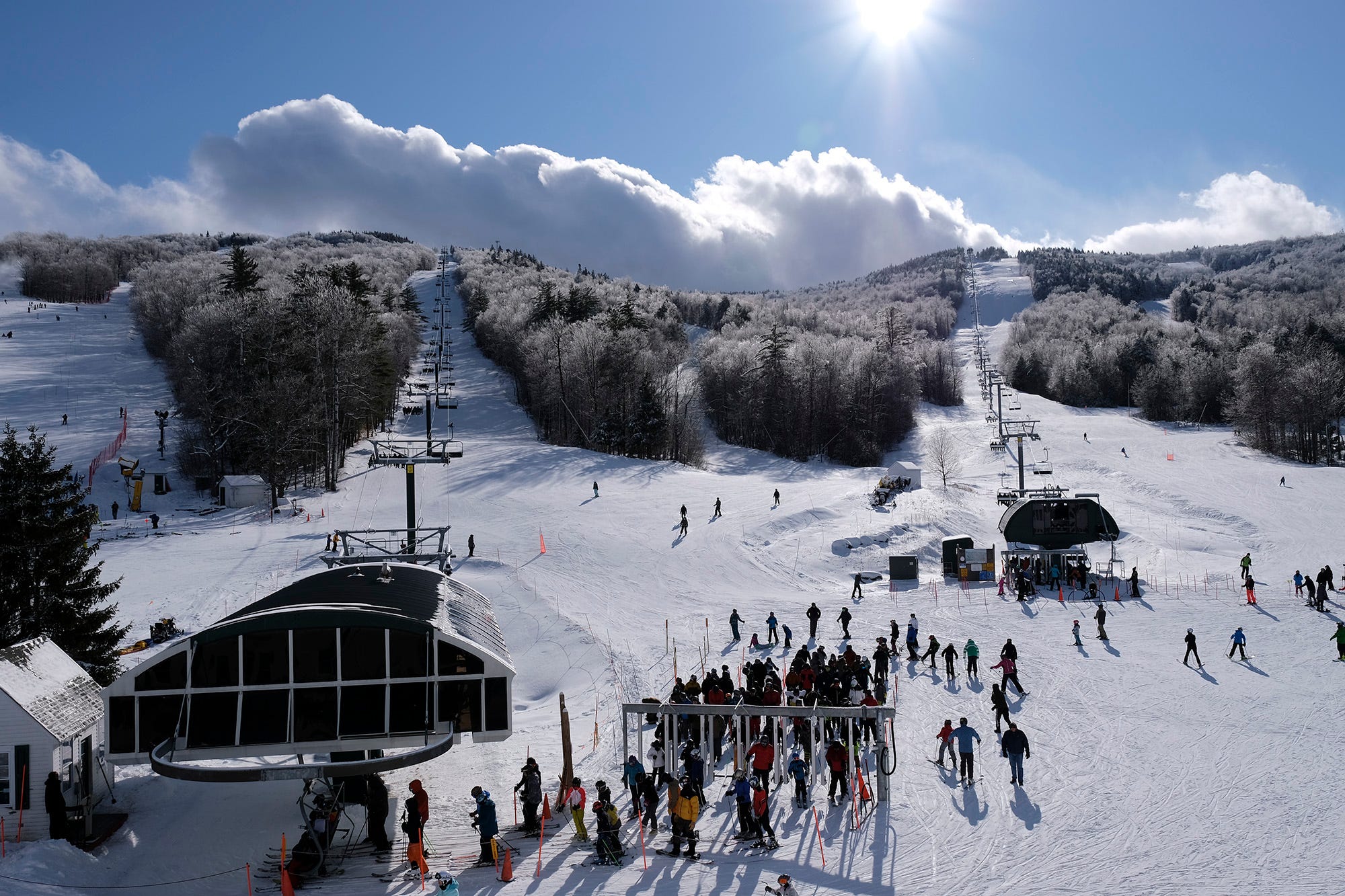
Questions I wish I’d asked
You know, I didn’t ask what it felt like to leave Mount Snow after 33 years, and I should have. I didn’t ask why Barnes left the mountain, because it was pretty obvious. The new owners, Vail, shuffled executives, as new corporate owners of new corporate things often do. I figured there was no point in dwelling on it. The Storm is sometimes deferential to or critical of the past, but it is mostly about the now and the what’s-to-come (I said mostly, Annoyingly Correct Bro). But it was obvious – in the way Barnes talked about Mount Snow and his time there and the people he worked with and the modern machine that he had helped evolve it into – that this was a man connected to his mountain in a way you might be connected to a kid or a home or a really great dog. He would not have left it on purpose. That was a story that would have been worth getting into, and it was a failure on my part not to.
What I got wrong
I mentioned the power of Mount Snow’s snowmaking system, and intimated that they were “the first in the Northeast to really build out” such a system. There’s a lot of nuance to that statement, and the way I framed it in the podcast wasn’t clear at all. Here’s what I meant: while every large resort in the Northeast has a snowmaking system that could blow the doors off of any 5,000-acre western rambler, Mount Snow’s is one of the most modern and efficient, able to make the most of its water in a way that is more advanced than many of its competitors (though that gap shrinks yearly as all of the big Northeast mountains continuously upgrade their snowmaking arsenals).
I also stated that this was Vail’s fourth season of operating the former Peak Resorts, when it was actually their third, after acquiring the portfolio in July 2019. I also asked Barnes to tell us about Pacific Resorts Group and the five different ski areas that it owns “around the country.” Only four of their resorts are in the United States, however – the other is in British Columbia, Canada.
I didn’t get this wrong, but a lot of New England people will accuse me of doing so: I stated that the region did not have the rabid night-skiing culture that the Midwest does. This is true. While Southern New England does feature several extensive night-skiing operations, the total number of ski areas, and the total hours that they operate after dark, are far less numerous than in the Midwest, where nearly 100 percent of the ski areas offer night skiing across 100 percent of their terrain seven nights per week from December to March.
Why you should ski Ragged Mountain
Secrets are a little easier to come by in the West, where bigness is the default and out-of-staters fly by the off-brands to cash in their Epkon coupons at the headliners. Take Sunlight, Colorado, for example, 2,000 vertical feet fading into the rear-views of the Aspen-bound. Or Sugar Bowl, 1,650 acres and 500 inches of snow served by five high-speed quads half an hour closer to San Fran than Palisades Tahoe or Northstar. That’s a little tougher in the East, where the drop-off is fairly severe between the chest-thumbing 2,000-foot bad boy bristling with detachables and the family-owned 500-footer served by a single double chair that’s older than plant life.
But there are a few big-but-mine-all-mine-evil-cackling-laugh ski areas dotted around the East. Burke, 2,000 empty vertical feet of goldmine glades served by two high-speed quads just a few miles off (a very remote section of) I-91. Saddleback, modernized and re-opened and glorious with fall lines and glades of all kinds, but far enough out in the wilderness that you have to be careful you don’t turn the wrong way off the edge of the planet on your way to the hill.
And Ragged. For 20 years, there has been exactly one six-place detachable chairlift in New Hampshire, and it’s at Ragged Mountain, serving one of two glade-laced peaks. Serving the other, exactly adjacent glade-laced peak is an eight-year-old high-speed quad. There’s a whole complex of beginner lifts at the bottom for kids or whatever you call them. Lift tickets sit comfortably below triple digits. The season pass is one of the cheapest in New England, debuting this year at just $379 (it’s now $479 through Sept. 5). All this sits about equidistant between Interstates 89 and 93.
So what gives? How come skiers tend to blow right past Ragged on their way to Waterville Valley or Loon or Cannon? Well, those ski areas are bigger and, despite being farther from Boston, easier to get to, as they’re mostly right off Interstate 93. Each of them tops 2,000 feet of vert and tends to draw more snow than Ragged. Either state- or corporate-owned for decades, New Hampshire’s big resorts have been well-tended-to and well-taken care of, stable wintertime draws for basically the entire history of lift-served skiing.
But Pacific Resorts Group, which added Ragged to its far-flung, five-resort network back in 2007, has brought much-needed stability to this rad little mountain. The company has continued to improve the property, cutting new glades and upgrading the lifts. Long-term, they intend to expand onto a third mountain, Pinnacle Peak (as I may have mentioned above), and trails are already cut (also mentioned above). In Barnes, Ragged has one of the most experienced and well-liked ski area managers in the region. As megapass mania transforms the character of many of New Hampshire’s beloved ski areas, sending refugees scrambling for alternatives, Ragged is poised to become something big. Go there before that happens.
More Ragged
The excellent New England Ski History website has pages on just about any operating or lost ski area in the region, including Ragged.
New England Ski Journal TV visited Ragged back in 2016:
Ragged’s dense glade network speaks to the mountain’s long-established identity. Decades before thinned tree runs became ski area mainstays, Ragged called out a cluster of upper-mountain glades on this 1969 trailmap:
This has nothing to do with Ragged, but while researching this article, I came across this amazing trailmap of nearby (and now lost) King Ridge ski area. I really have no idea what the hell is going on here, but it makes me vaguely miss the ‘90s, the last decade before the world hyper-connected itself into a bottomless information and ridicule machine and it was possible for absurd things like this to exist in glorious obscurity:
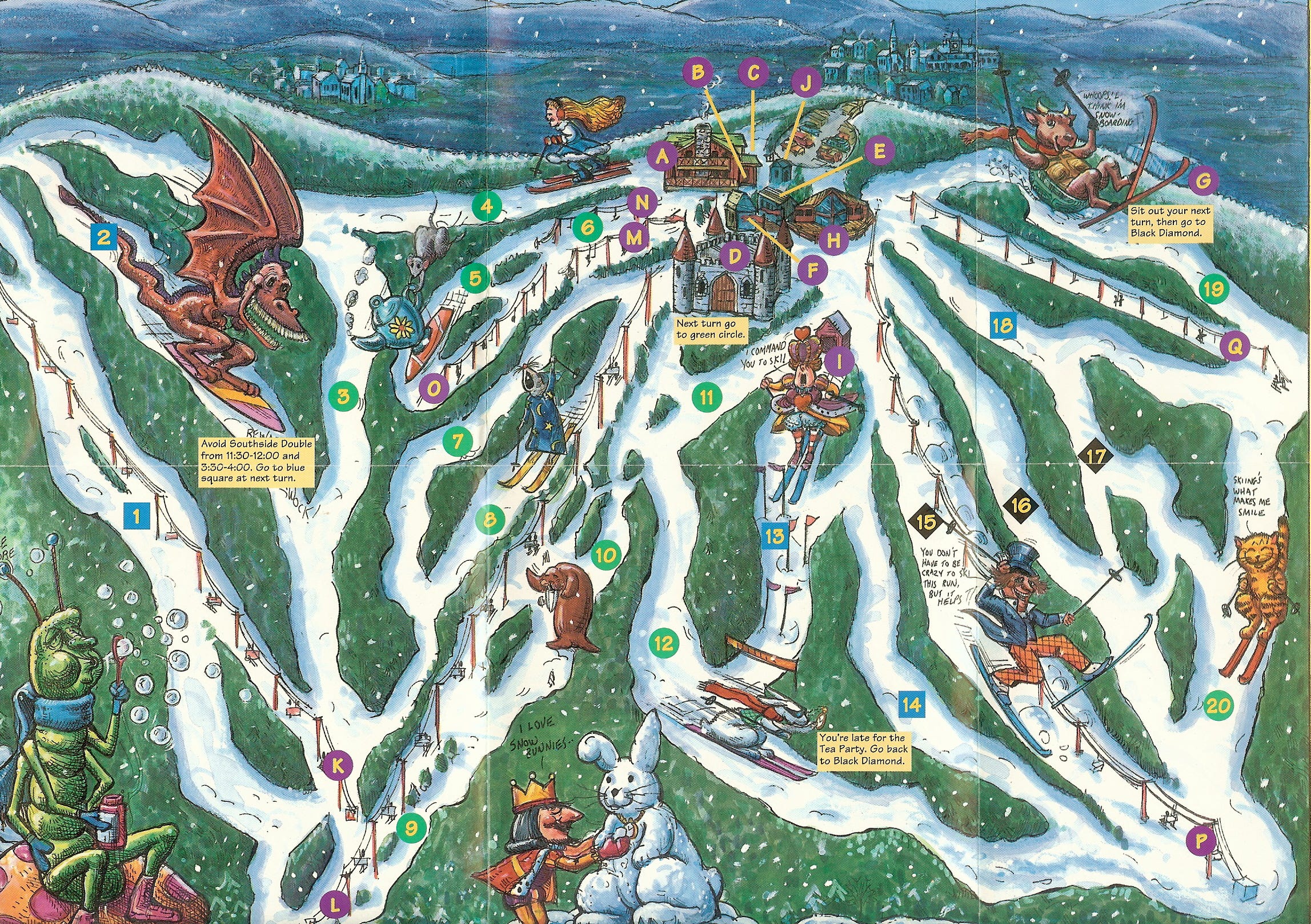
The Storm publishes year-round, and guarantees 100 articles per year. This is article 46/100 in 2022. Want to send feedback? Reply to this email and I will answer. You can also email skiing@substack.com.







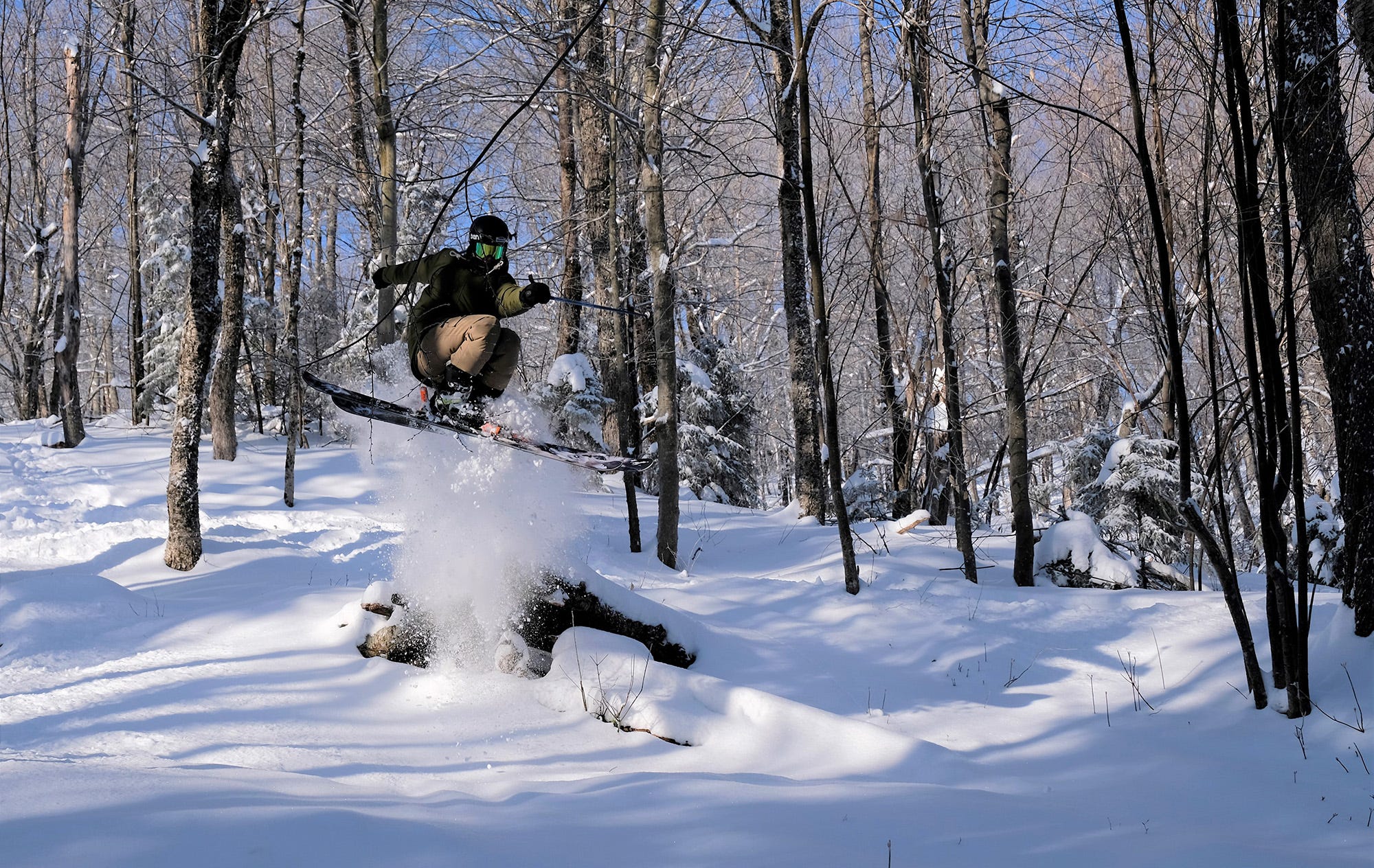
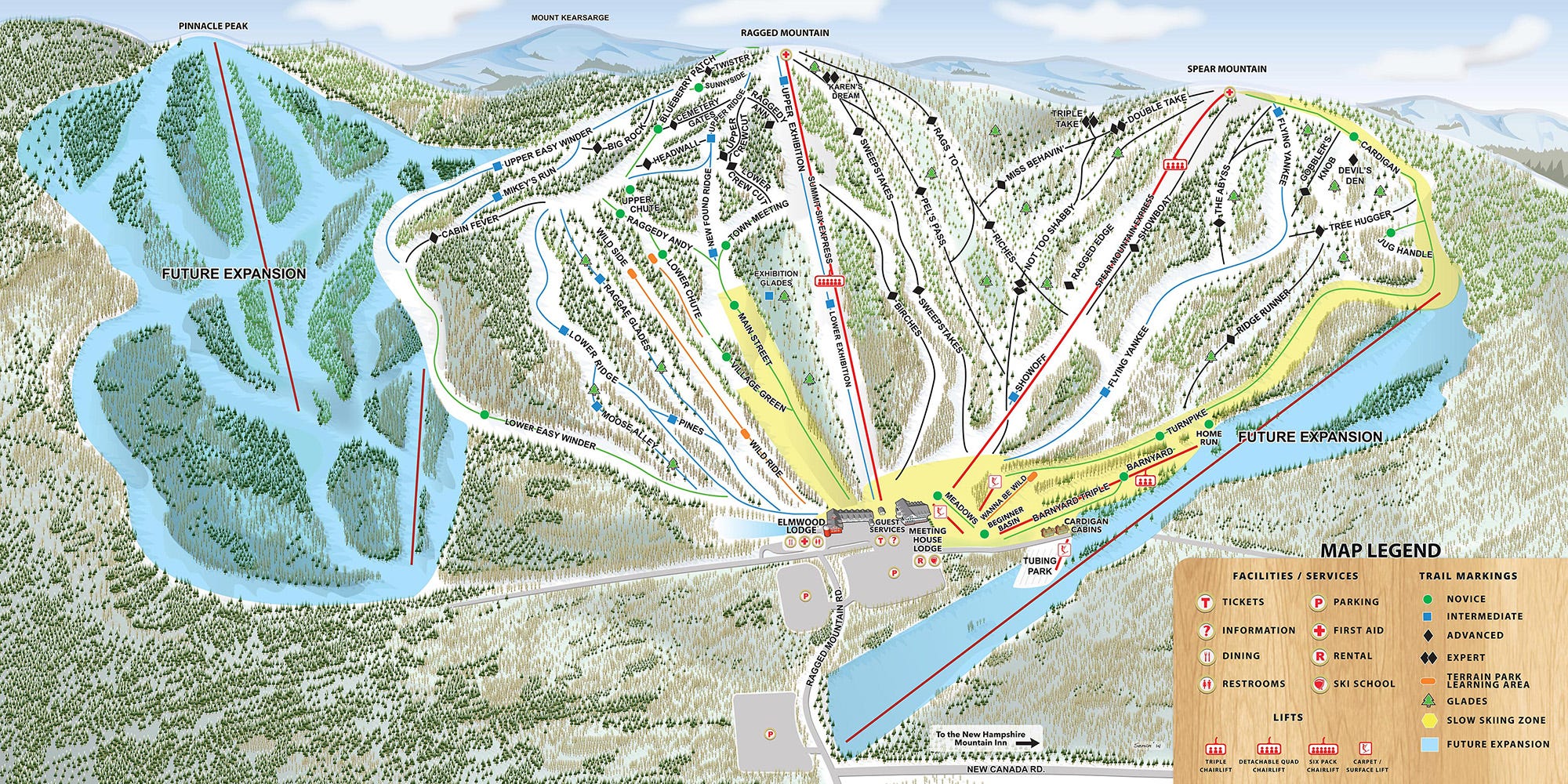
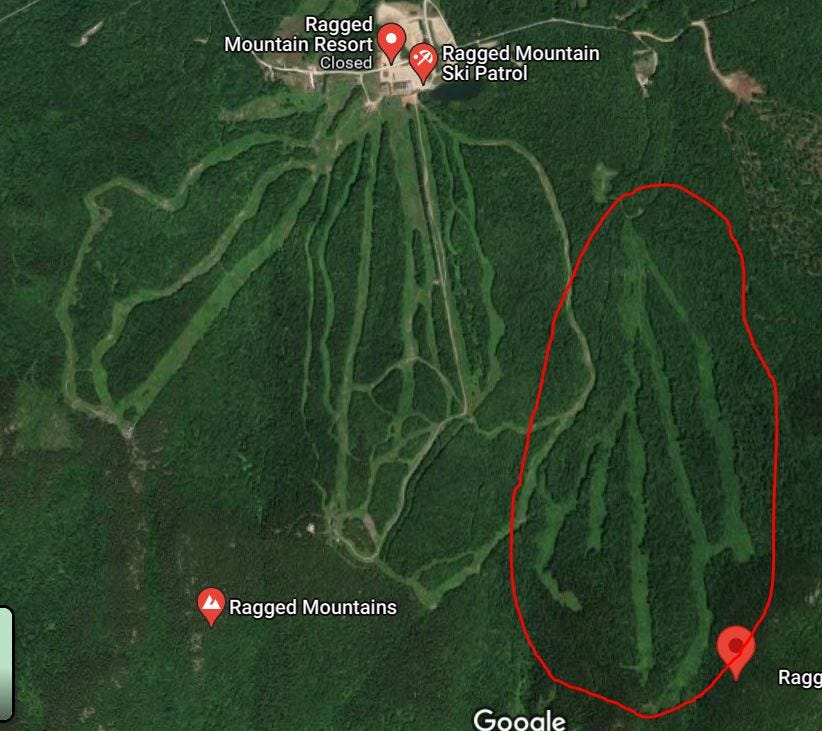
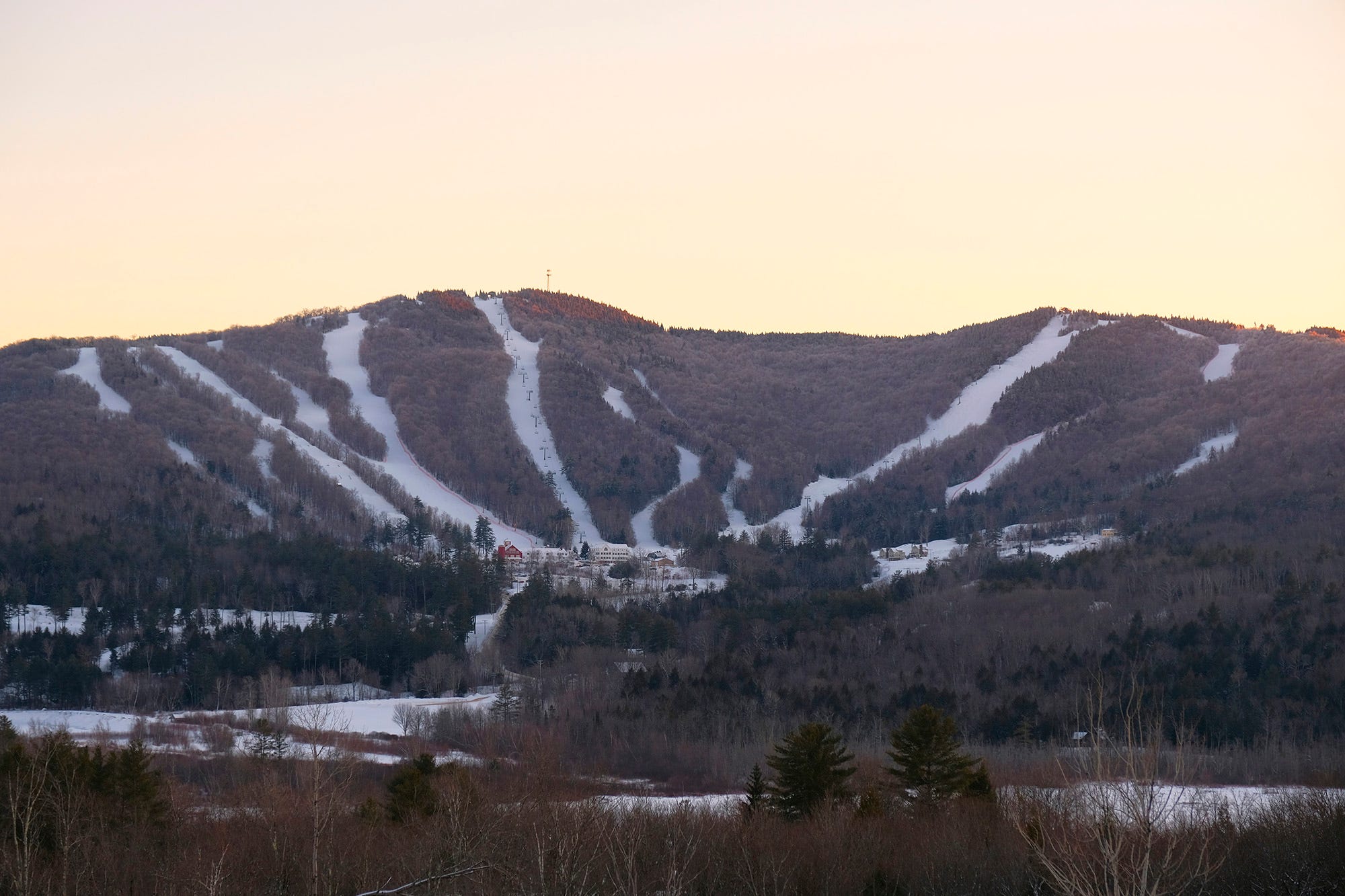
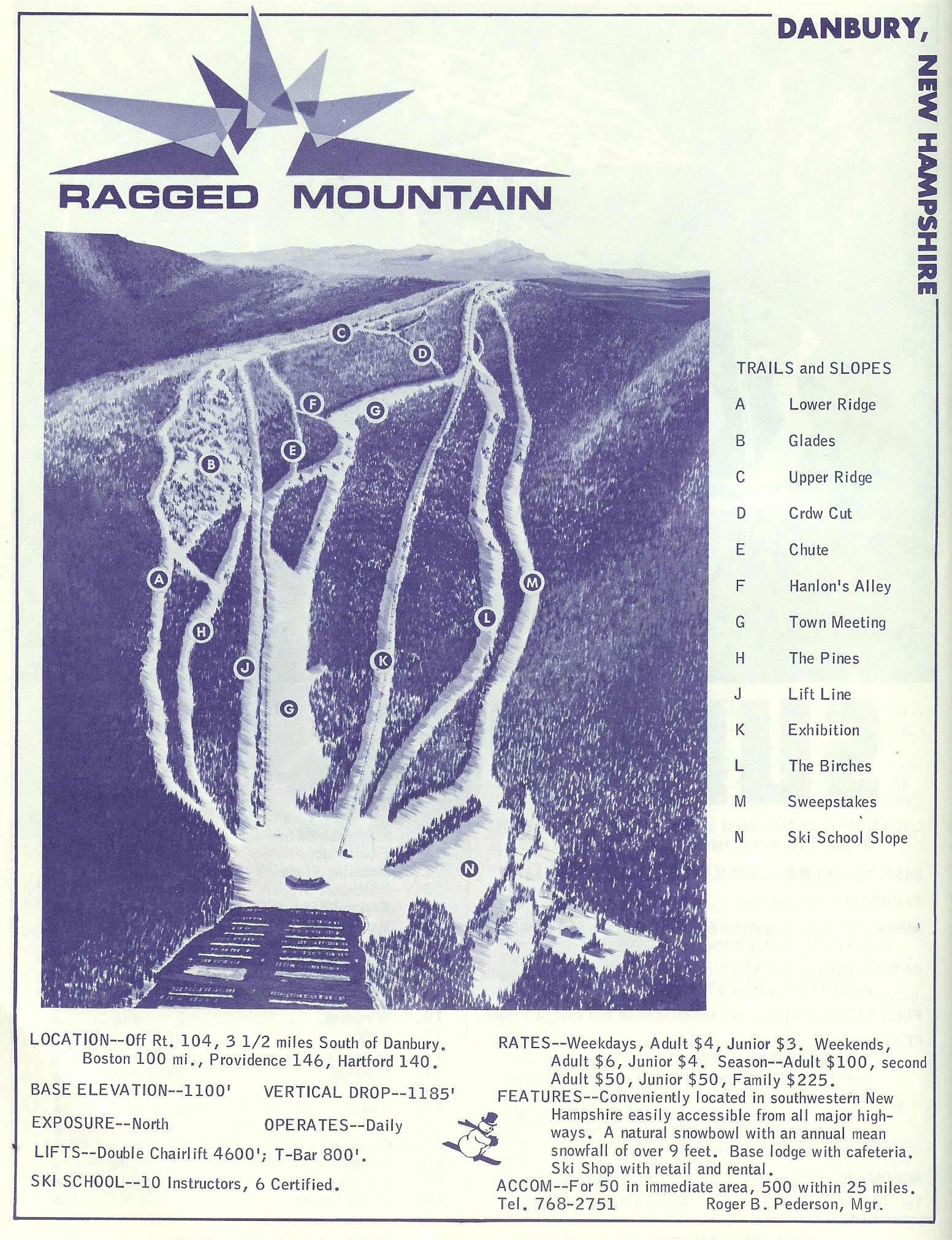






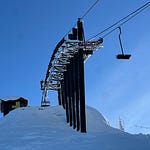


Share this post